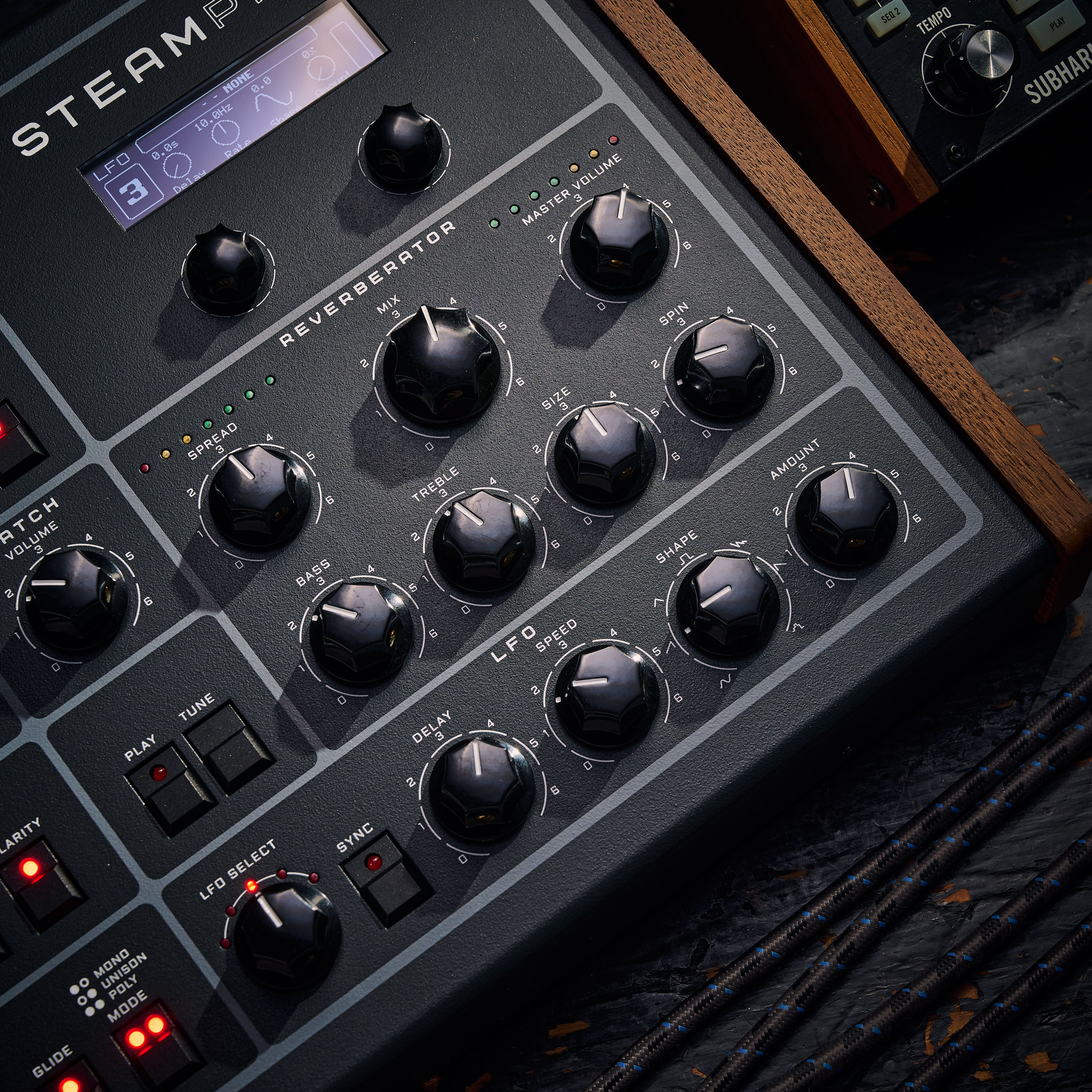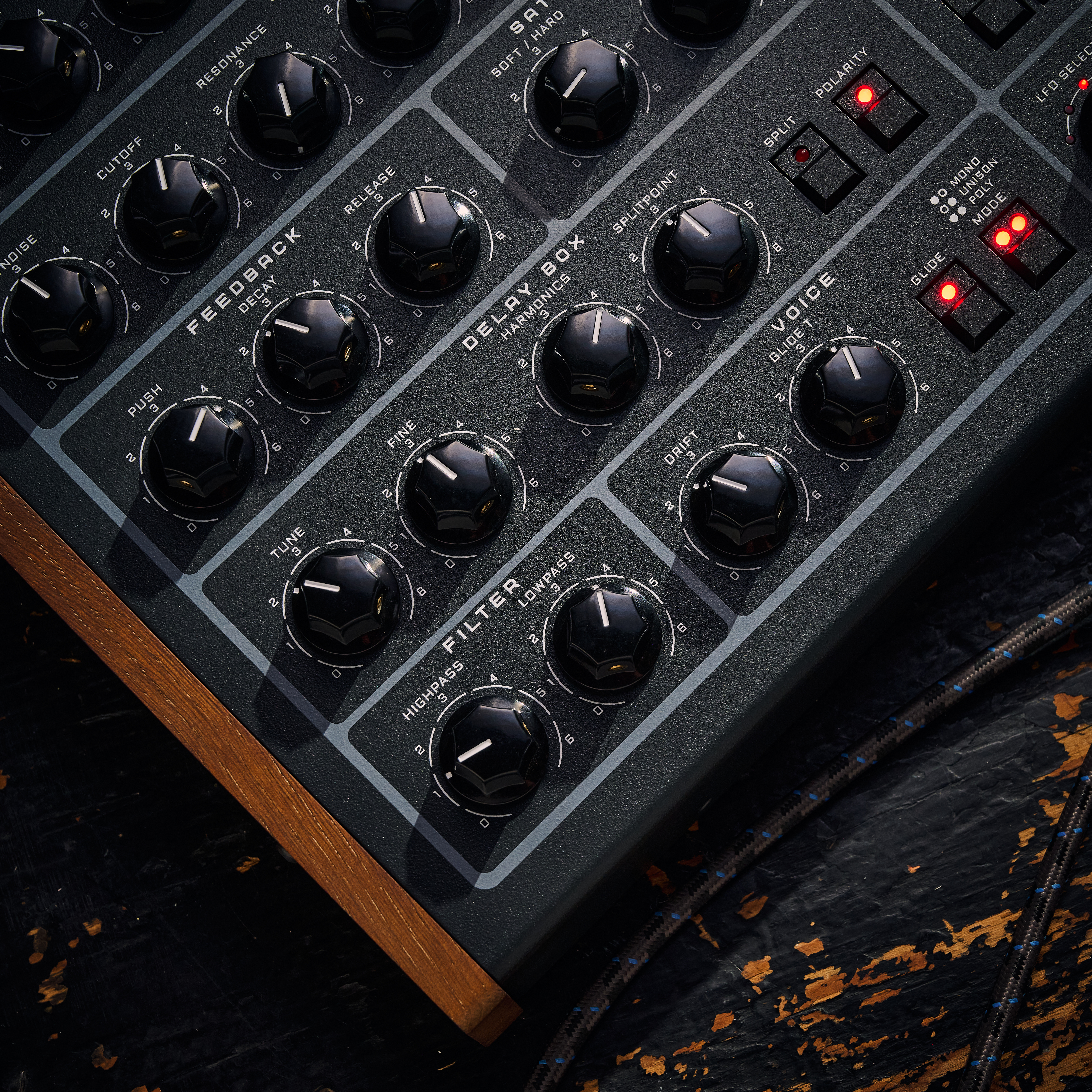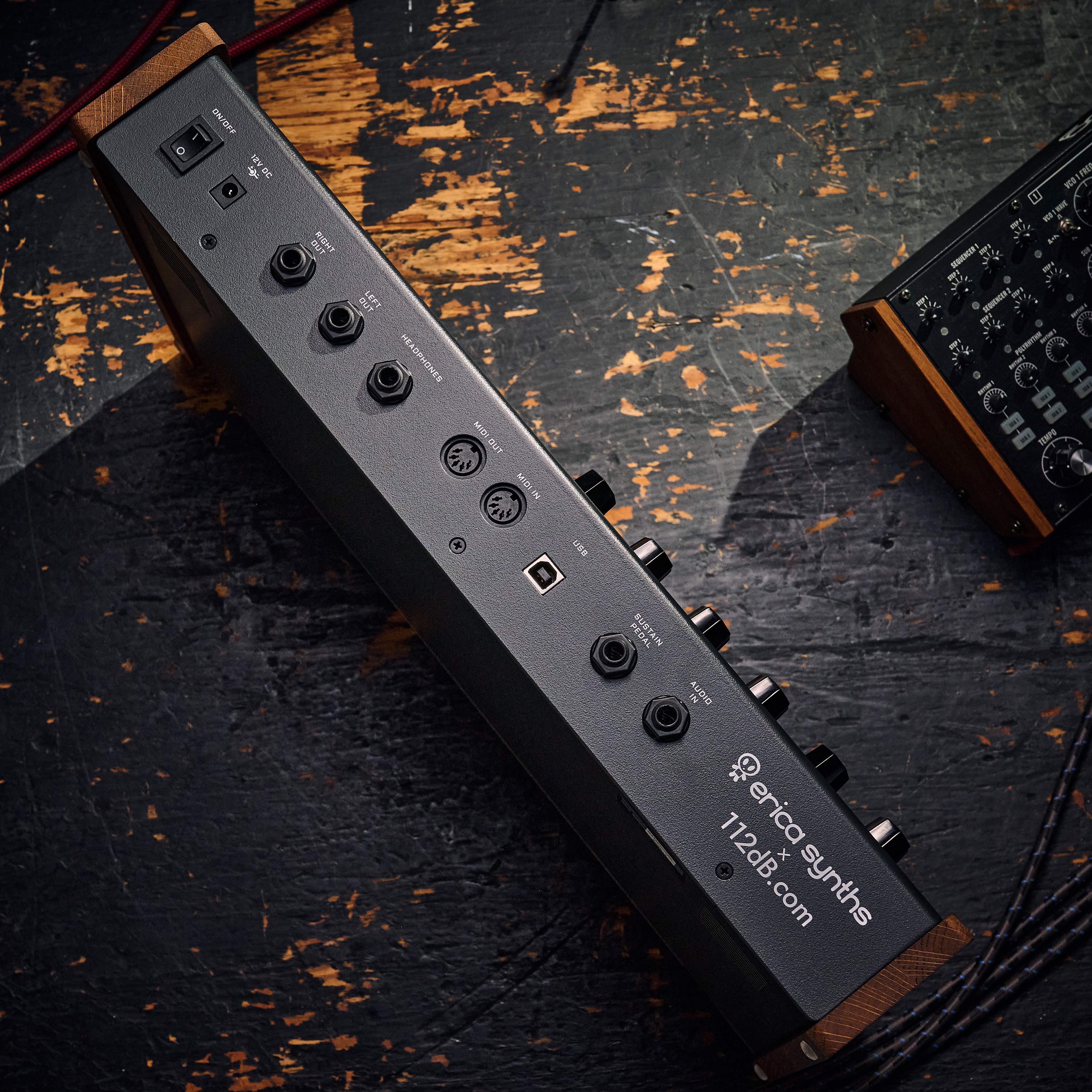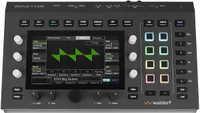MusicRadar Verdict
Despite being somewhat niche and unpredictable, Steampipe is more versatile than it first looks – and its hands-on controls and expressive capabilities really bring the sound to life.
Pros
- +
A fascinating sound engine that's more versatile than it first appears.
- +
Works well with expressive MIDI controllers.
- +
Lots of hands-on control.
- +
Lovely digital reverb.
Cons
- -
Can be very unpredictable.
- -
It's a shame it doesn't come equipped with its own expressive playing surface.
MusicRadar's got your back
Much like both FM and wavetable synthesis, physical modelling has slid in and out of fashion a few times over the past few decades.
Although the concept of physical modelling has roots that reach back further, its commercial breakthrough came in the early ‘90s with synths such as the Korg Prophecy and Yamaha VL1 that used the concept to create synthesized sounds that more accurately replicated the sound of acoustic instruments.
It was cutting-edge at the time, but PM synths fell out of fashion thanks to their often ‘naff’ sound sets and awkward usability.
Since the turn of millennium, however, we’ve seen a steady stream of new instruments that put a modernised spin of physical modelling, from plugins such as AAS’s Chromaphone and Ableton’s stock Collision device, to hardware like Mutable Instruments Elements or Waldorf Iridium, where it provides part of the digital sound engine.
Pricing
- €990 (excluding tax/VAT)
What is it?
Steampipe is the latest in this continuum. Created by Latvian brand Erica Synths in collaboration with Dutch software specialists 112db, Steampipe is an eight-voice digital polysynth based around physical modelling, in this case used primarily – although not exclusively – to emulate the qualities of wind and string instruments.
As with all physical modelling synths, Steampipe’s sound engine has two main elements to it, an exciter section, which generates the initial attack element of a sound, and a resonator.
Here those sections are labelled The Steam and The Pipe. For this latter element, Steampipe uses a Karplus-Strong algorithm, which uses tuned delay lines to recreate the characteristics of resonant materials in the real world.
Want all the hottest music and gear news, reviews, deals, features and more, direct to your inbox? Sign up here.
This isn’t such an unusual approach in itself – the same techniques were present in early forms of physical modelling synthesizers. Steampipe is distinctive in the specific setup of its Karpus-Strong resonator, however, as well as the hands on controls it offers over its various elements.
Performance
Steampipe is fairly unusual in the physical modelling realm for its abundance of chunky, hands-on controls. The top section of the UI provides control over the exciter section, which can be provided by a blend of DC or noise source, or be switched to an external input.
Along the top row, a set of envelope controls let the user shape this initial noise as well as adjust characteristics including velocity response, keytracking and legato behaviour. The sound also feeds into a low-pass filter, which can be switched between 1-pole and resonant 2-pole modes, the latter of which can be pushed into self-oscillation.
Broadly speaking, this Steam section acts in a way that’s fairly easy to predict for those familiar with subtractive synthesis. The same can’t be said for the Pipe resonator, which has a habit of acting unpredictably even when you get your head around what each of its controls does.
The controls here are divided into three sections, the first affects the decay’s feedback loop, with controls to adjust the decay and release, as well as a more enigmatic ‘push’ control, which alters the interplay between the Steam generator and Pipe resonator.
This feedback section also has controls to adjust the qualities of the saturation applied to the feedback loop, with dials to morph between soft and hard clipping as well as alter the harmonic symmetry of the effect. There are also further options within Steampipe’s menus to alter the harmonic behaviour of this distortion.




Below these controls are a set of options for altering the tuning of the delay line. Here, it’s also possible to split Steampipe’s delay box in two, effectively creating a pair of resonators with different tonal characteristics, which can be good for creating bell-like tones.
Finally, a pair of filter controls adjust the cutoff frequency of low and high pass filters applied to the feedback loop.
None of these controls are entirely unfamiliar in their own right, but given the nature of the feedback loop, the way they behave and interact can be unpredictable. This can work both in favour, and to the detriment of Steampipe.
On the one hand, it makes the synth feel like a genuinely adventurous instrument. Despite being all digital under-the-hood, the chunky controls and raw sound give Steampipe the feel of an organic, responsive instrument, and there are times when making a few small adjustments to an otherwise conventional sound suddenly brings it to life in a vibrant, if chaotic manner.
The flip side to this is that well intentioned tweaks to a patch can often blow your sound design intentions off course. Adjusting the delay filters, for example, sometimes radically alters the tone of a sound in a way that’s difficult to predict. The harmonic controls, similarly, can easily nudge a sound into unpleasant territory, accidentally ruining a sound you had in the works.
The synth’s front panel tuning function comes in handy here, making it easy to recalibrate a sound when necessary.
Pipe dreams
Although the abundance of controls mean that Steampipe is naturally a very hands-on instrument, under-the-hood lies a flexible modulation system, meaning that there’s also plenty of scope for assigning hands-free movement too.
Internal modulation can be provided by the synth’s five individual LFOs, which have a shared front panel control section that allows for easy assignment, along with control over the rate, delay and shape of each LFO.
Steampipe can also assign four different MIDI modulation routings, which can be set up in its MIDI controller menu. As well as allowing for additional movement, this lets the synth be configured to be played expressively using different forms of controller, from traditional keyboard devices to MIDI wind controllers or MPE instruments.



It’s worth noting on the latter front that Steampipe is MPE compatible and will respond to per-note pitch modulation without much need for additional configuration, although controllers need to be configured to use eight MIDI channels, to match the eight synth voices, as opposed to the 16 used by MPE as standard.
The final major element of Steampipe’s sound engine is its reverb unit. This is a digital effect capable of creating long, rich reverb tails, adjusted using the size control.
Stereo and Spin control add width and detuning to the sound, which can help create truly epic tones. The reverb also has parameters for adjusting the low and high frequencies, which are handy for reigning in the effect a little. All told, it's a fantastic sounding digital reverb.
Verdict
The first time I saw Steampipe in action a few years ago, I was intrigued by the concept but a little sceptical of how broad its appeal might be.
While physical modelling can be fantastic for creating specific types of sound, even in the plugin realm it lacks the versatility of wavetable or even FM synthesis. Given that Steampipe is somewhat specialised even within the context of PM synths, does it do enough to warrant its price?
Having spent more time with it, I’m more convinced on this point. Although Steampipe specialises in wind sounds and ‘blown’ textures, it can do a lot beyond this.
Its excellent stock of presets demonstrates this well, taking in a range of mallets and convincing string instruments, but also more abstract synth tones, including off-kilter electronic sounds and rich, harmonically complex drones.
I’ve seen Steampipe described dismissively as looking like a Reaktor ensemble in a box. Technically speaking, this isn’t completely inaccurate – the synth is relying entirely on digital processing and is certainly reminiscent of the sort of experimental device you might find made in something like Max or Reaktor.
However, the abundance of robust, hands-on controls really do work in its favour. Digital or not, Steampipe is one of the most organic, alive feeling synths I’ve tried in a while, even if – thanks to its propensity to knock sounds off on wild, inharmonic tangents – it occasionally feels like it’s trying to pick a fight with you.
In this sense, it reminds me of my pet cat; full of life and personality, and able to convince you that you’re part of a loving, mutually-beneficial partnership, right up until the moment it bares its claws and takes a swipe at you for no apparent reason.
All that being said, Steampipe is not a ‘workhorse’ synth, and remains relatively expensive for a digital instrument. What’s more, I’d argue it really comes to life when paired with an expressive controller, so access to something appropriate – such as an MPE keyboard – is worth factoring into the cost.
On this point, it’s perhaps a shame that Steampipe doesn’t come equipped with a keyboard or playing surface of its own. The desktop format helps to keep the price down, and means users can choose to interact with the synth using a device of their choice. But seeing as it works so well with expressive inputs, a version of Steampipe with its own purpose-built, multi-expression playing surface could have been a real winner.
Hands-on demos
Erica Synths
Alternatives
Physical modelling is one of several digital synthesis approaches offered by Waldorf's compact but powerful desktop synth.
Read the full Waldorf Iridium Core review
Baby Audio's plugin puts an entirely different, but equally fascinating spin on physical modelling.
Read the full Baby Audio Atoms review
Specifications
Key features | 8-voice polyphony Physical modeling engine with 32 adjustable parameters 5 assignable LFOs with delay and sync Extensive modulation matrix with MIDI controller-specific configurations 64 factory presets and 192 user preset memory Preset export and import via USB DIN5 MIDI Input MIDI Thru/Out All parameters are MIDI CC controllable Stereo line level output Headphone output Dimensions:45.5cm x 27cm x 7cm Weight: 3kg |
Contact |
I'm the Managing Editor of Music Technology at MusicRadar and former Editor-in-Chief of Future Music, Computer Music and Electronic Musician. I've been messing around with music tech in various forms for over two decades. I've also spent the last 10 years forgetting how to play guitar. Find me in the chillout room at raves complaining that it's past my bedtime.
You must confirm your public display name before commenting
Please logout and then login again, you will then be prompted to enter your display name.




